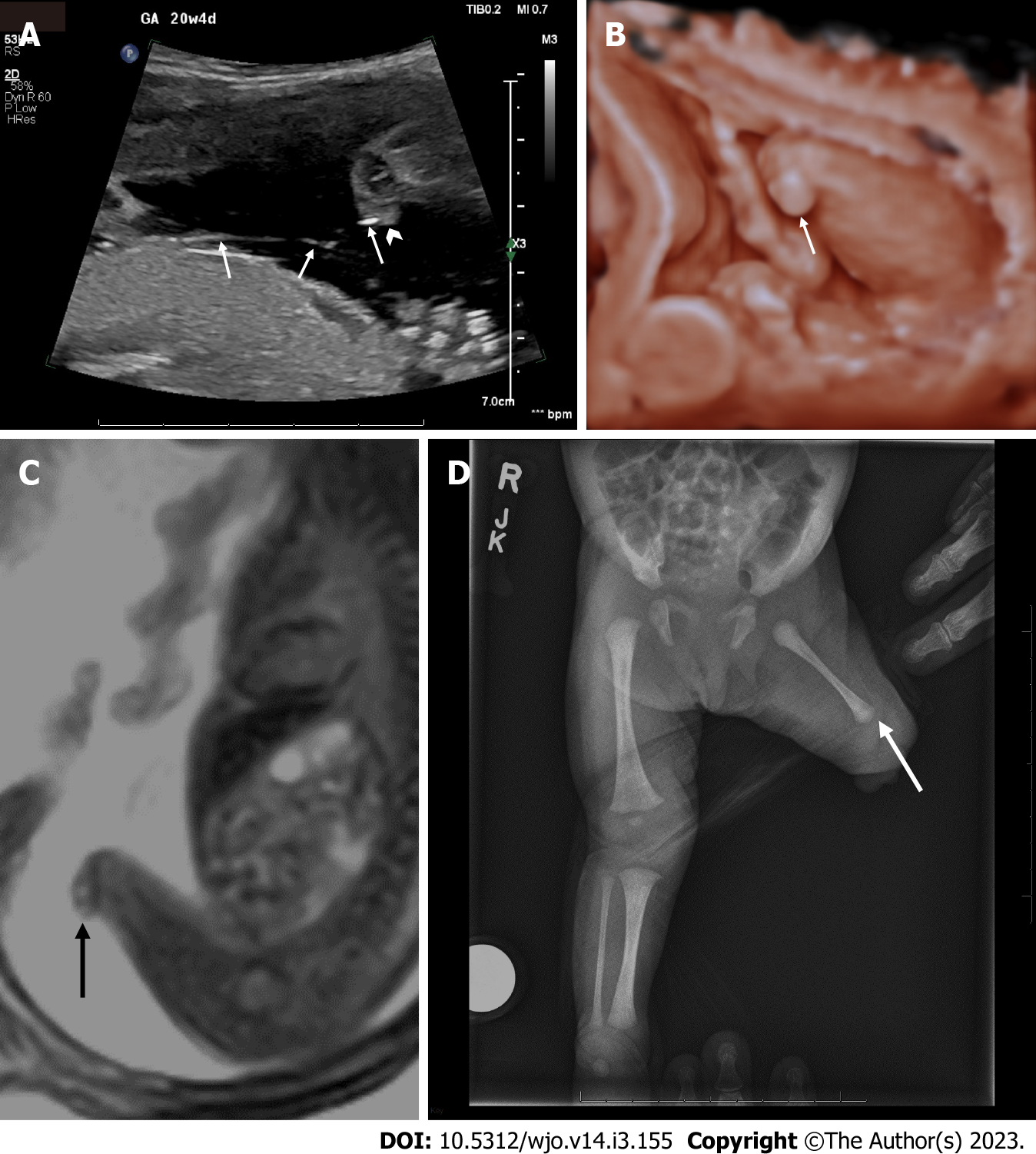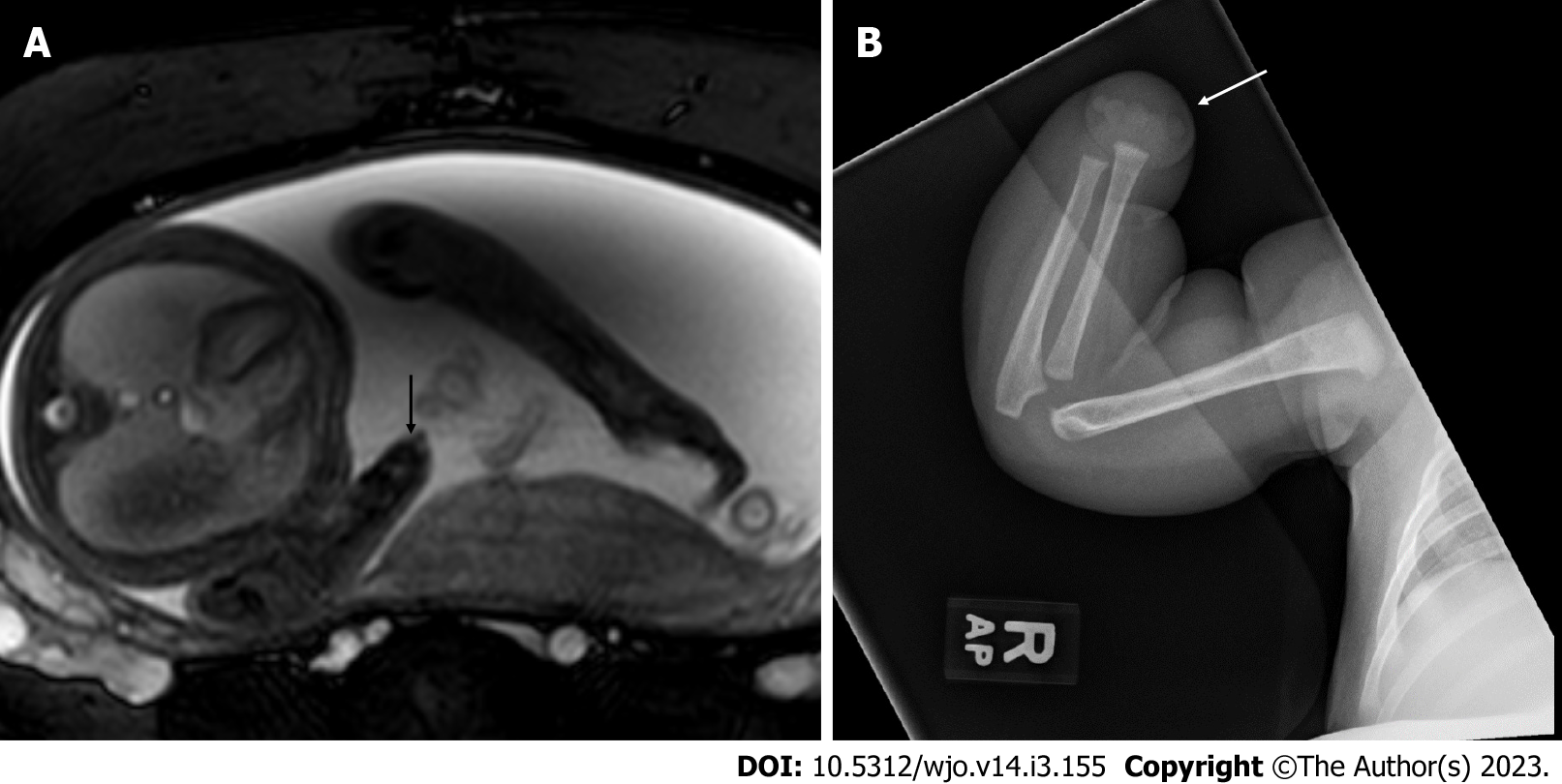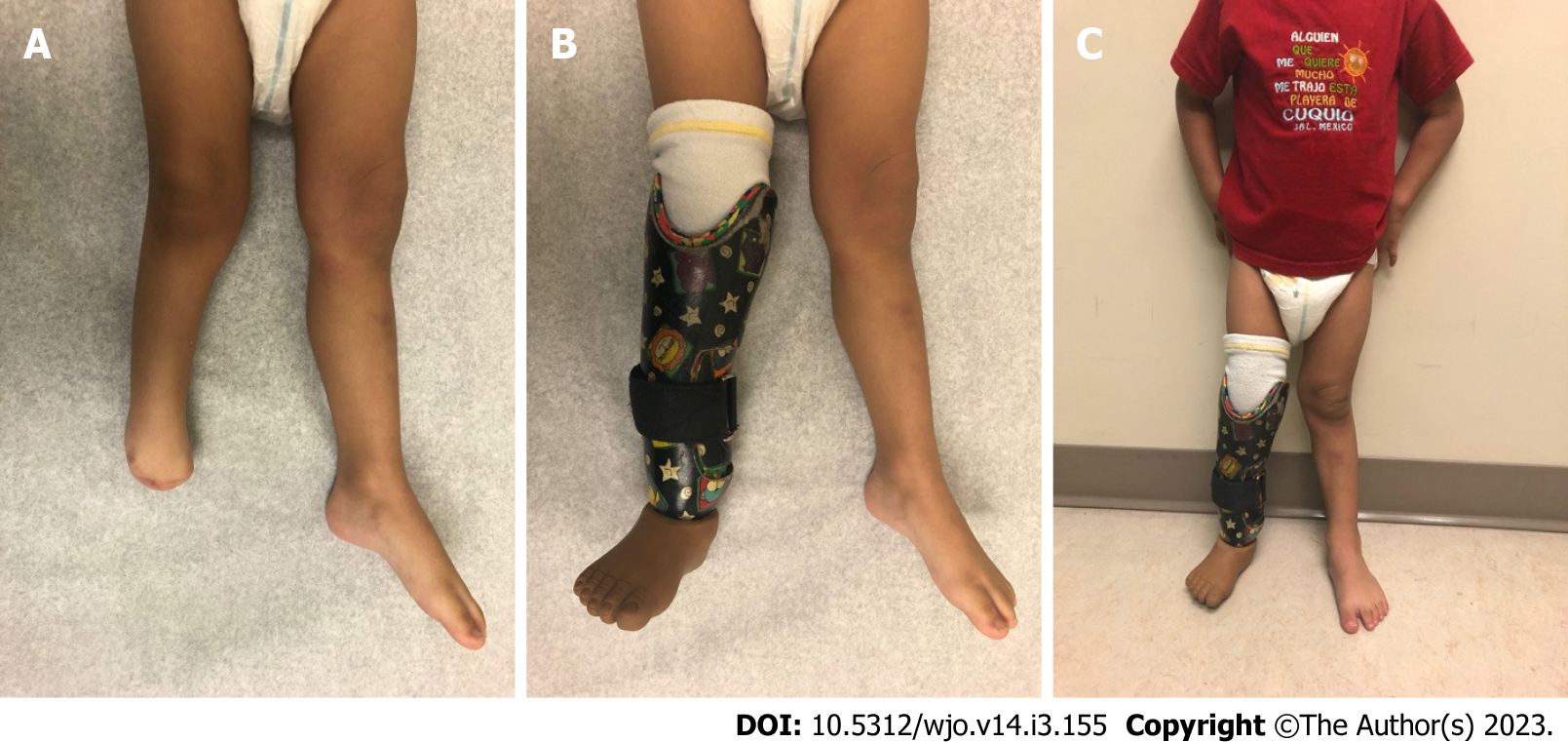Copyright
©The Author(s) 2023.
World J Orthop. Mar 18, 2023; 14(3): 155-165
Published online Mar 18, 2023. doi: 10.5312/wjo.v14.i3.155
Published online Mar 18, 2023. doi: 10.5312/wjo.v14.i3.155
Figure 1 Prenatal imaging at 24 wk and 5 d demonstrating a transverse limb deficiency of the right forearm.
A: Two-dimensional ultrasound (2D US) showing markedly shortened right ulna (bone between "+" crosshairs) and radius (bone between "x" crosshairs) secondary to a transverse limb reduction defect (arrow); B: High-resolution 2D ultrasound with high-frequency 4-18 Megahertz probe demonstrating a hyperechogenic thin line (arrow) representing a visualized amniotic band attached to the forearm defect; C: 3D US rendered image showing the terminal transverse limb defect below the elbow (arrow); D: 3D US reconstructed image using the maximum intensity projection to demonstrate the markedly short ulna (arrows) and radius (arrowhead). The advantage of 3D US in this case is that the normal humerus and elbow (which are not in the same plane of section in Figure 1A) as well as their relationship with the amputated distal forearm can be appreciated in a single image. The 3D rendered images (Figure 1C and D) are easier to understand for both the referring providers and parents; E: Axial balanced turbo field echo fetal magnetic resonance imaging slice showing the deficiency (arrow).
Figure 2 Prenatal images at 20 wk and 4 d and postnatal images demonstrating a congenital transverse limb deficiency below the left knee.
A: Two-dimensional (2D) ultrasound demonstrating the amniotic bands (arrows) that attach to the residual nubbin (arrowhead); B: 3D ultrasound rendered image showing the transverse reduction defect at the level of the knee (arrow); C: Sagittal balanced turbo field echo slice on prenatal MRI of the left lower extremity showing a terminal transverse limb defect (arrow); D: Postnatal AP x-rays of the lower extremities demonstrating the left transverse reduction defect at the left of the knee, residual nubbin (arrow) and shorter left femur compared to right.
Figure 3 Prenatal and post natal images of a transverse limb deficiency at the level of the right wrist.
A: Axial balanced turbo field echo slice on fetal MRI at 28 wk and 5 d demonstrating a terminal transverse limb defect (arrow); B: Postnatal radiographs confirming the diagnosis (arrow).
Figure 4 Clinical photographs of a terminal transverse deficiency of the right leg.
A: Supine photograph of the transverse deficiency below the right knee; B: Supine photograph demonstrating proper prosthesis fit; C: Standing photograph demonstrating comfortable standing with the prosthesis.
- Citation: Vij N, Goncalves LF, Llanes A, Youn S, Belthur MV. Prenatal radiographic evaluation of congenital transverse limb deficiencies: A scoping review. World J Orthop 2023; 14(3): 155-165
- URL: https://www.wjgnet.com/2218-5836/full/v14/i3/155.htm
- DOI: https://dx.doi.org/10.5312/wjo.v14.i3.155












